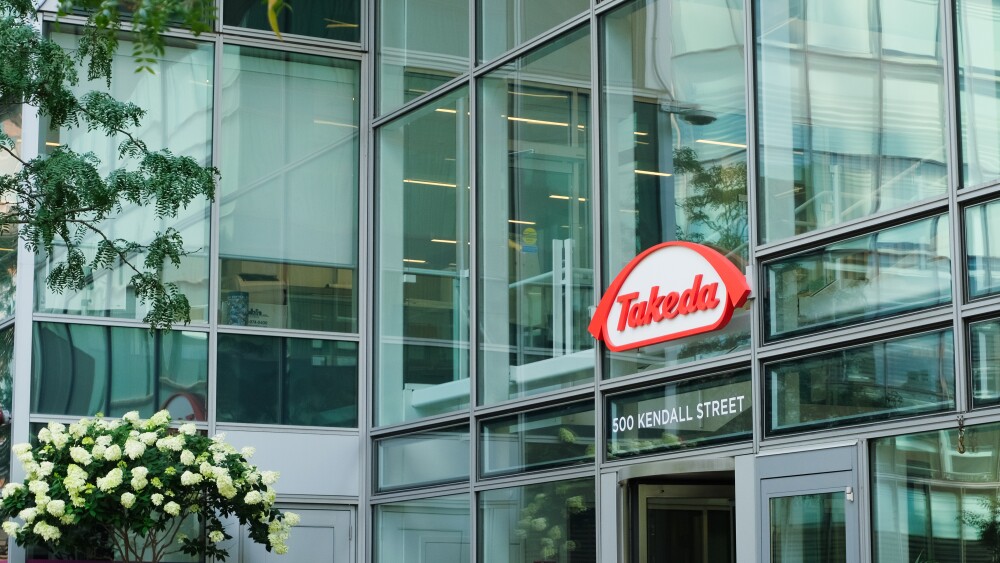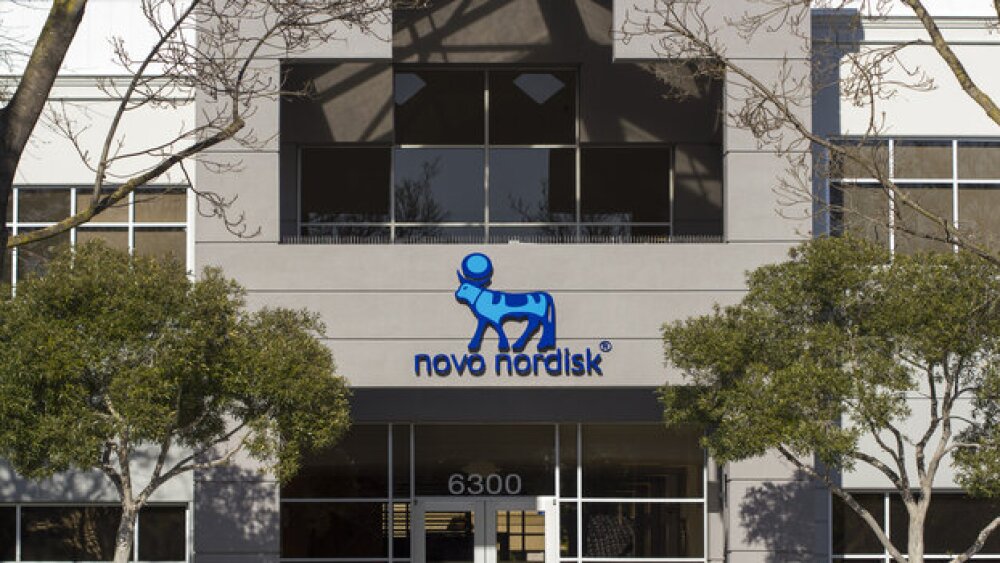A post hoc analysis of data from the Phase II CENTAUR study showed a 10.6-month longer median survival duration for AMX0035 participants, Amylyx announced Thursday.
From left: Amylyx Co-founders and Co-CEOs Justin Klee and Josh Cohen/Courtesy Amylyx Pharmaceuticals
Shares of Amylyx Pharmaceuticals are falling again, despite the company announcing positive long-term survival analysis data for AMX0035, its experimental amyotrophic lateral sclerosis (ALS) therapy that is up for potential approval from the U.S. Food and Drug Administration next month.
A post hoc analysis of data from the Phase II CENTAUR study that uses the rank-preserving structural failure time model, often used in oncology studies to account for placebo crossover, showed a 10.6-month longer median survival duration for AMX0035 participants, Amylyx announced Thursday.
Additionally, trial participants who received the Amylyx drug and who continued into an open-label extension phase demonstrated an 18.8-month longer median survival duration than participants who never received AMX0035 in a subgroup analysis, the company said. All told, the latest CENTAUR analysis suggested a larger survival benefit for AMX0035 when making that placebo crossover adjustment. Amylyx reported that this latest data shows a median survival duration of 10.6 to 18.8 months compared with the 6.9 months seen in the original prespecified intent-to-treat analysis in ALS patients.
Amylyx also noted that, as of the March 2021 cutoff date, there was a lower hazard of death and longer median survival duration of 4.8 months in those originally randomized to AMX0035 compared to those originally randomized to placebo.
How this will impact the FDA’s decision next month is unknown. At the end of March, the regulatory agency’s Peripheral and Central Nervous System Drugs Advisory Committee voted 6 to 4 against recommending approval of the experimental drug. As BioSpace previously reported, the committee members who opposed approval did so primarily on the Phase II CENTAUR trial design. The committee also questioned the 6.9-month survival benefit initially posted, and suggested the difference in decline measured on the ALSFRS-R scale between the placebo and treatment groups was not great enough.
Justin Klee and Joshua Cohen, co-chief executive officers at Amylyx, expressed excitement about the post hoc analysis and said they hope the FDA takes this data into consideration before making a decision on AMX0035 next month.
“The thing we think is important is that this data highlights a treatment that can slow disease progression and increase life span. This is an important thing for the FDA and other agencies to consider,” Klee told BioSpace.
The latest survival data provides additional hope for an ALS community that currently only faces a grim future. Cohen said that most ALS patients who participate in a clinical trial typically only get one shot at possibly receiving an experimental medication that could slow their disease and prolong their life. He noted that the company wanted to use the trial structure it chose for the CENTAUR study because they believed it was unethical to run a survival study in ALS where some patients are kept on placebo the entire time. They wanted to ensure that placebo patients would have an opportunity to cross over and receive the active treatment of AMX0035.
“We have a very clear clinical benefit. If you can see that it has a functional benefit, it feels cruel for that to be denied to patients,” he said.
Amylyx’s AMX0035 is a fixed-dose combination of two small molecules, sodium phenylbutyrate and taurursodiol. It is designed to target the endoplasmic reticulum and mitochondrial-dependent neuronal degeneration pathways in ALS and other neurodegenerative diseases.
If the FDA does opt to give AMX0035 the green light in June, Cohen said Amylyx will be in a position to manufacture the medication for commercialization.
While the updated CENTAUR data may not move the needle for the FDA regarding potential approval, it adds to the depth of understanding of how AMX0035 can impact the devastating disease as the company pushes forward with its ongoing Phase III PHOENIX study. The primary endpoint of the PHOENIX trial will include safety and efficacy, as well as the potential impact of AMX0035 on disease progression over 38 weeks. That will be determined following baseline readings of ALSFRS-R and survival. Amylyx noted that additional measures critical to ALS patients including slow vital capacity (SVC), serial assessments of patient-reported outcomes and ventilation-free survival rates, will also be assessed in the study.
The PHOENIX trial is expected to include 600 patients who have definite or clinically probable ALS within 24 months of symptom onset. The PHOENIX trial will have broader inclusion criteria than CENTAUR.
ALS, also known as Lou Gehrig’s disease, is a progressive neurodegenerative disease that negatively affects neurons in the brain and the spinal cord. Patients with ALS lose the ability to control muscle movement. That eventually leads to total paralysis and then death. It is estimated that approximately 12,000 to 15,000 Americans have ALS, with about 5,000 to 6,000 new cases diagnosed annually.
Currently, the standard of care treatment is Riluzole, a glutamate blocker. In addition to Riluzole, which was approved in 1995, is the more recently approved Radicava, developed by Mitsubishi Tanabe. Other drugs in development for ALS include NeuroSense Therapeutics’ PrimeC, an extended-release formulation of two FDA-approved drugs, ciprofloxacin and celecoxib, as well as Clene Inc.’s add-on therapy, CNM-Au8, an investigational gold bioenergetic nanocatalyst that has shown positive data in a mid-stage ALS study. WAVE Life Sciences is developing WVE-004 for ALS. Last month, WAVE posted positive data from a Phase Ib/IIa study.
If Amylyx proves to be successful with AMX0035, the company intends to begin assessing the therapeutic in other indications “where the science makes sense,” Cohen said. “If we’re lucky enough to be successful, we see it as our responsibility to triple our efforts in this area.”
The PDUFA date for AMX0035 is June 29.





